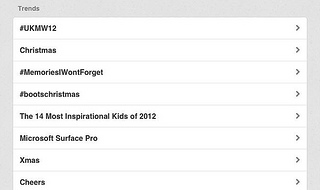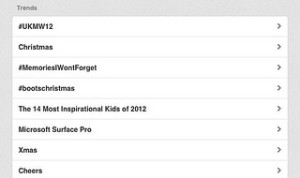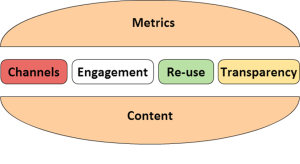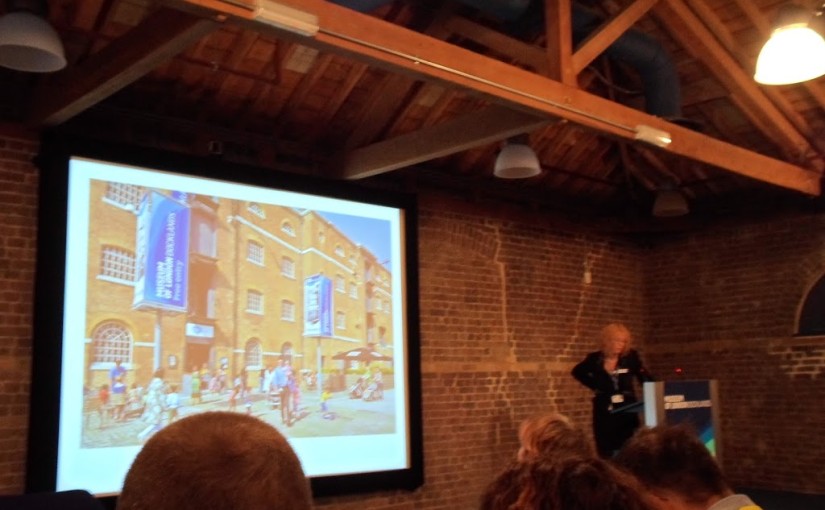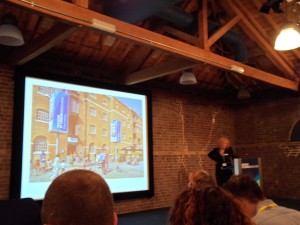Some people who couldn't make the Museums Association conference (or #museums2012) asked for more information on the session on digital strategies, so here are my introductory remarks and some scribbled highlights of the speakers' papers and discussion with the audience.
Update: a year later, I've thought of a 'too long, didn't read' version: digital strategies are like puberty. Everyone has to go through it, but life's better on the other side when you've figured things out. Digital should be incorporated into engagement, collections, venue etc strategies – it's not a thing on its own.
The speakers were Carolyn Royston (@caro_ft), Head of New Media at Imperial War Museum; Hugh Wallace (@tumshie), Head of Digital Media at National Museums Scotland; Michael Woodward (@michael1665), Commercial Director at York Museums Trust, and I chaired the session in my role as Chair of the Museums Computer Group. From the conference programme: 'This session explores the importance of developing a digital strategy. It will provide insight into how organisations can incorporate digital into a holistic approach that meets wider organisational and public engagement objectives and look at how to use digital engagement as a catalyst to drive organisational change.'
After various conversations about digital and museums with people who were interested in the session, I updated my introduction so that overall the challenge of embracing the impact of digital technologies, platforms and audiences on museums was put in a positive light. The edited title that appeared in the programme had a different emphasis ('Go digital' rather than the 'Getting strategic about digital' we submitted) so I wanted it to be clear that we weren't pushing a digital agenda for the sake of technology itself. Or as I apparently said at the time, "it's not about making everything digital, it's about dealing with the fact that digital is everywhere".
I started by asking people to raise their hands if their museum had a digital strategy, and I'd say well over half the room responded, which surprised me. Perhaps a third were in the process of planning for a digital strategy and just a few were yet to start at all.
My notes were something like this: "we probably all know by now that digital technologies bring wonderful opportunities for museums and their audiences, but you might also be worried about the impact of technology on audiences and your museum. ‘Digital’ varies in organisations – it might encompass social media, collections, mobile, marketing, in-gallery interactives, broadcast and content production. It touches every public-facing output of the museum as well as back-office functions and infrastructure.
You can’t avoid the impact of digital on your organisation, so it’s about how you deal with it, how you integrate it into the fabric of your museum. As you’ll hear in the case studies, implementing digital strategy itself changes the organisation, so from the moment you start talking to people about devising a digital strategy, you'll be making progress. For some of our presenters, their digital strategy ultimately took the form of a digital vision document – the strategy itself is embedded in the process and in the resulting framework for working across the organisation. A digital strategy framework allows you to explore options in conversation with the whole organisation, it’s not about making everything digital.
Our case studies come from three very different organisations working with different collections in different contexts. Mike, Commercial Director at York Museums Trust will talk about planning the journey, moving from ad hoc work to making digital integral to how the organisation works; Hugh, Head of Digital Media at National Museums Scotland will discuss the process they went through to develop digital strategy, what’s worked and what hasn’t’; Carolyn Royston, Head of Digital Media at Imperial War Museums, who comes from a learning background, will talk from IWM’s digital adventure, from where they started to where they are now. They’re each at different stages of the process of implementing and living with a digital strategy.
Based on our discussions as we planned this session, the life cycle of a digital strategy in a museum seems to be: aspiration, design, education and internal outreach, integration with other strategies (particularly public engagement) and sign off… then take a deep breath, look at what the ripple effect has been and start updating your strategies as everything will have changed since you started. And with that, over to Mike…"
Mike talked about working out when digital delivery really makes sense, whether for inaccessible objects (like a rock on Mars) or a delicate book; the major role that outreach and communication play in the process of creating a digital strategy; appointing the staff that would deliver it based on eagerness, enthusiasm and teamwork rather than pure tech skills; where digital teams should sit in the organisation; and about the possibility of using digital volunteers (or 'armchair experts') to get content online.
Hugh went for 'frameworks, not fireworks', pointing out that what happens after the strategy is written is important so you need to create a flexible framework to manage the inevitable change. He discussed the importance of asking the right-sized question (as in one case, where 'we didn't know at the start that an app would be the answer') and working on getting digital into 'business as usual' rather than an add-on team with specialist skills. Or as one tweeter summarised, 'work across depts, don't get hung up on the latest tech, define users realistically and keep it simple'.
Carolyn covered the different forms of digital engagement and social media the IWM have been trying and the role of creating their digital vision in helping overcome their fears; the benefits of partnerships with other organisations for piggybacking on their technology, networks and audiences, and the fact that their collections sales have gone up as a result of opening up their collections. In the questions, someone described intellectual property restrictions to try to monetise collections as 'fool's gold' – great term! I think we should have a whole conference session on this sometime soon.
When reviewing our discussions beforehand I'd found a note from a planning call which summed up how much the process should change the organisation: 'if you're not embarrassed by your digital strategy six months after sign-off you probably haven't done it right', and on the day the speakers reinforced my impression that ultimately, devising and implementing a digital strategy is (probably) a necessary process to go through but it's not a goal in its own right. The IWM and NMS examples show that the internal education and conversations can both create a bigger appetite for digital engagement and change organisational expectations around digital to the point where it has to be more widely integrated. The best place for a digital strategy is within a public engagement strategy that integrates the use of digital platforms and working methods into the overall public-facing work of the museum.
Listening to the speakers, a new metaphor occurred to me: is implementing a digital strategy like gardening? It needs constant care and feeding after the big job of sowing seeds is over. And much like gardening for pleasure (in the UK, anyway), the process may have more impact than the product.
And something I didn't articulate at the time – if the whole museum is going to be doing some digital work, we technologists are going to have to be patient and generous in sharing our knowledge and helping everyone learn how to make sensible decisions about digital content and experiences. If we don't, we risk being a bottleneck or forcing people to proceed based on guesswork and neither are good for museums or their audiences.
So much awesomeness! #GODIGITAL #Museums2012 twitter.com/dannybirchall/…
— Danny Birchall (@dannybirchall) November 9, 2012
Huge thanks for Carolyn, Hugh and Michael for making the whole thing such a pleasure and to the Museum Association conference organisers for the opportunity to share our thoughts and experiences.
And finally, if you're interested in digital strategies in heritage organisations, the Museums Computer Groups annual Museums on the Web conference is all about being 'strategically digital' (which as you might have guessed from the above, sometimes might mean not using technology at all) but UKMW12 tickets are selling out fast, so don't delay.


